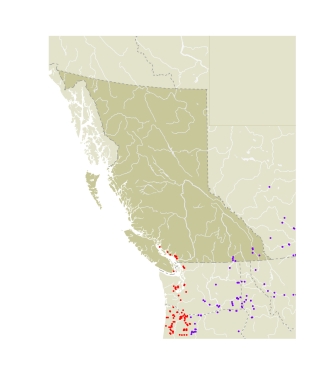Adults are on the wing from late May to early August, with peak flight occurring in the first week of July. Eggs are laid singly on the foodplant, hatch within the week, develop into mature larvae by late September, and pupate before winter (Scudder 1889b). There is one brood per year in BC. Further south, the Silver-spotted Skipper is multivoltine. Elsewhere the larvae have been found on a number of woody Fabaceae. J. Pelham (pers.comm.) reared subspecies E.c. californicus on Lotus crassifolius in western Washington. CSG has observed oviposition by subspecies E.c. clarus at the leaf bases of Glycyrrhiza lepidota (wild licorice) at Bummer’s Flats, north of Cranbrook. This plant is one of the two major larval foodplants for this species in the southern Rocky Mountains (Ferris and Brown 1981). In our region, the introduced black locust, Robinia pseudoacacia, is also a likely foodplants for west Kootenay populations.
|
|
